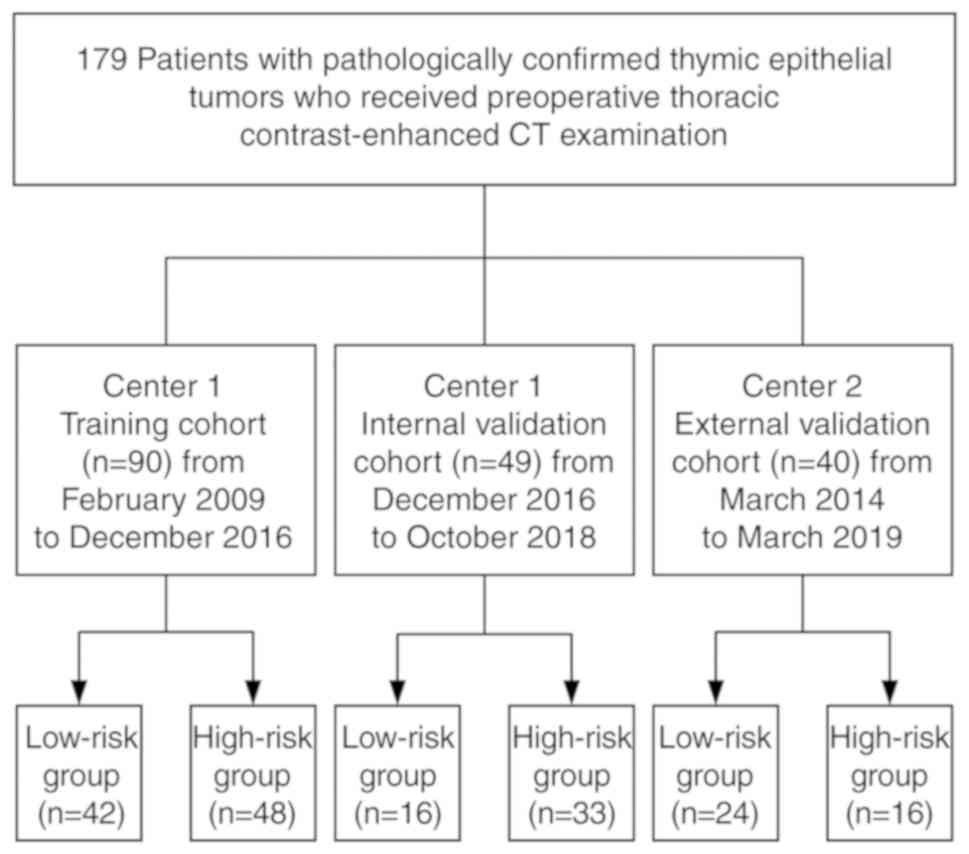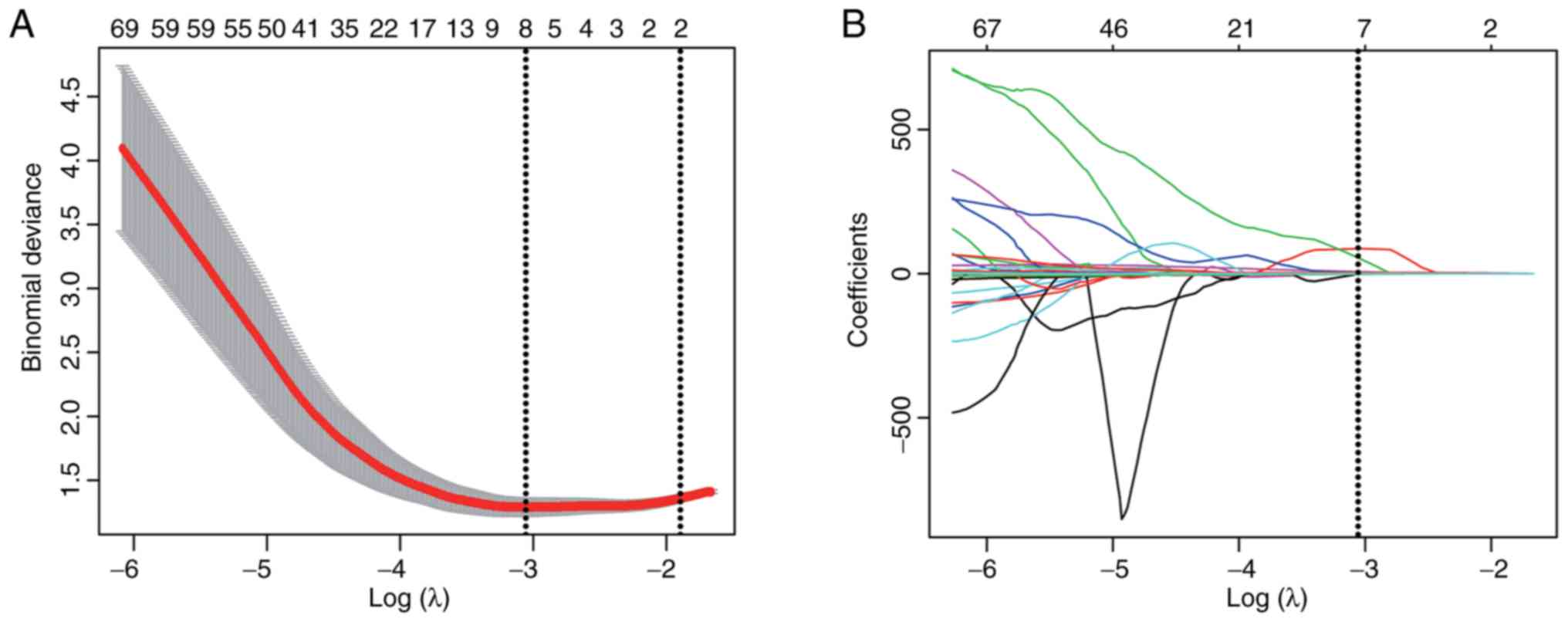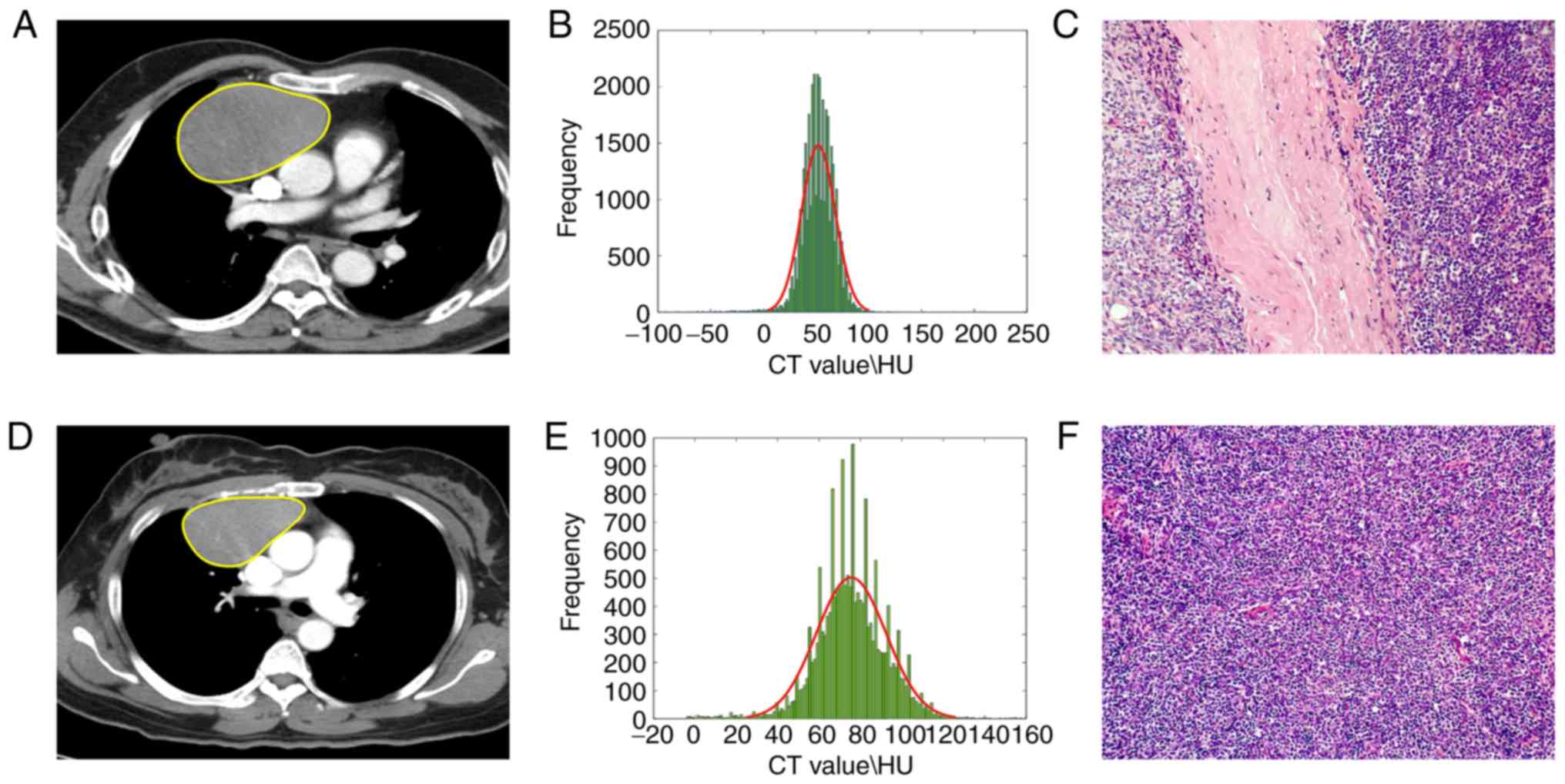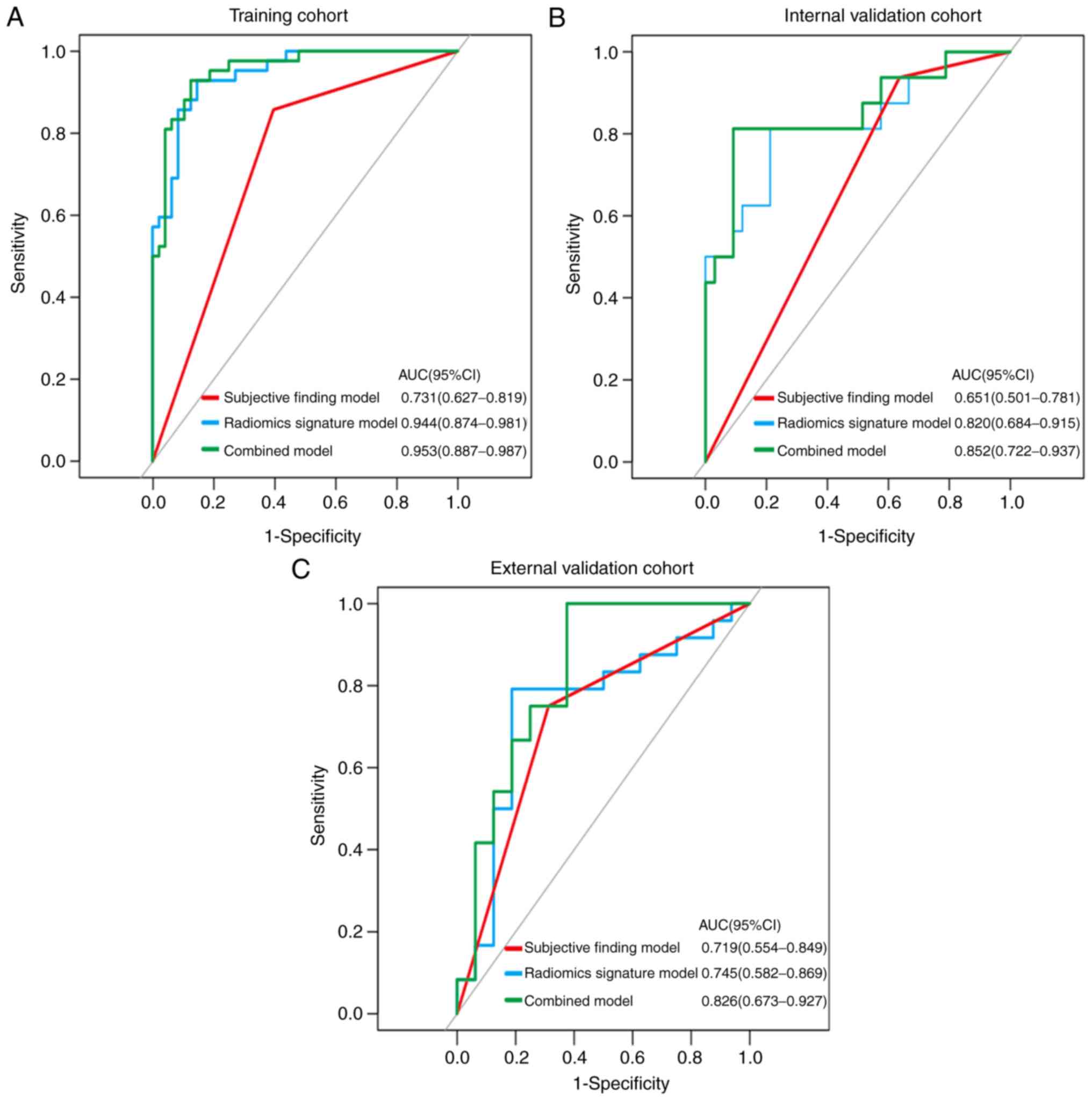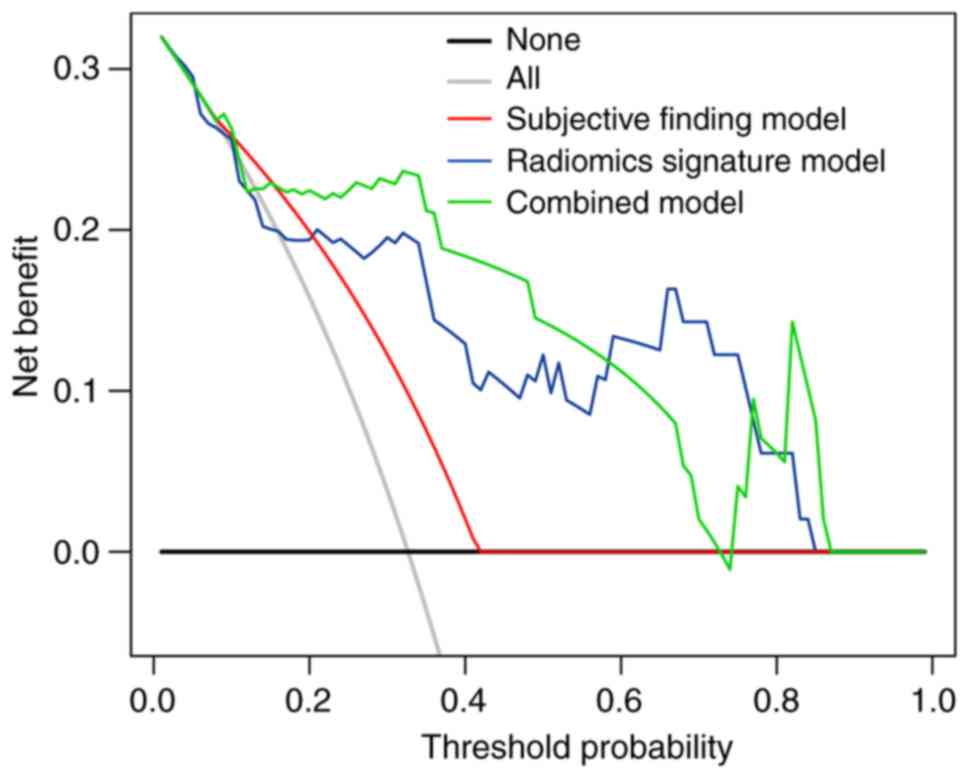|
1
|
Marom EM: Advances in thymoma imaging. J
Thorac Imaging. 28:69–83. 2013. View Article : Google Scholar : PubMed/NCBI
|
|
2
|
Fujii Y: Published guidelines for
management of thymoma. Thorac Surg Clin. 21:125–129. 2011.
View Article : Google Scholar : PubMed/NCBI
|
|
3
|
Marx A, Ströbel P, Badve SS, Chalabreysse
L, Chan JK, Chen G, de Leval L, Detterbeck F, Girard N, Huang J, et
al: ITMIG consensus statement on the use of the WHO histological
classification of thymoma and thymic carcinoma: Refined
definitions, histological criteria, and reporting. J Thorac Oncol.
9:596–611. 2014. View Article : Google Scholar : PubMed/NCBI
|
|
4
|
Marx A, Chan JK, Coindre JM, Detterbeck F,
Girard N, Harris NL, Jaffe ES, Kurrer MO, Marom EM, Moreira AL, et
al: The 2015 World Health Organization classification of tumors of
the thymus: Continuity and changes. J Thorac Oncol. 10:1383–1395.
2015. View Article : Google Scholar : PubMed/NCBI
|
|
5
|
Giaccone G, Wilmink H, Paul MA and van der
Valk P: Systemic treatment of malignant thymoma. Am J Clin Oncol.
29:336–344. 2006. View Article : Google Scholar : PubMed/NCBI
|
|
6
|
Okumura M, Miyoshi S, Fujii Y, Takeuchi Y,
Shiono H, Inoue M, Fukuhara K, Kadota Y, Tateyama H, Eimoto T and
Matsuda H: Clinical and functional significance of WHO
classification on human thymic epithelial neoplasms: A study of 146
consecutive tumors. Am J Surg Pathol. 25:103–110. 2001. View Article : Google Scholar : PubMed/NCBI
|
|
7
|
Falkson CB, Bezjak A, Darling G, Gregg R,
Malthaner R, Maziak DE, Yu E, Smith CA, McNair S, Ung YC, et al:
The management of thymoma: A systematic review and practice
guideline. J Thorac Oncol. 4:911–919. 2009. View Article : Google Scholar : PubMed/NCBI
|
|
8
|
Jeong YJ, Lee KS, Kim J, Shim YM, Han J
and Kwon OJ: Does CT of thymic epithelial tumors enable us to
differentiate histologic subtypes and predict prognosis? AJR Am J
Roentgenol. 183:283–289. 2004. View Article : Google Scholar : PubMed/NCBI
|
|
9
|
Marom EM, Milito MA, Moran CA, Liu P,
Correa AM, Kim ES, Komaki R, Erasmus JJ, Hofstetter WL, Rice DC and
Swisher SG: Computed tomography findings predicting invasiveness of
thymoma. J Thorac Oncol. 6:1274–1281. 2011. View Article : Google Scholar : PubMed/NCBI
|
|
10
|
Liu GB, Qu YJ, Liao MY, Hu HJ, Yang GF and
Zhou SJ: Relationship between computed tomography manifestations of
thymic epithelial tumors and the WHO pathological classification.
Asian Pac J Cancer Prev. 13:5581–5585. 2012. View Article : Google Scholar : PubMed/NCBI
|
|
11
|
Lambin P, Rios-Velazquez E, Leijenaar R,
Carvalho S, van Stiphout RG, Granton P, Zegers CM, Gillies R,
Boellard R, Dekker A and Aerts HJ: Radiomics: Extracting more
information from medical images using advanced feature analysis.
Eur J Cancer. 48:441–446. 2012. View Article : Google Scholar : PubMed/NCBI
|
|
12
|
Kumar V, Gu Y, Basu S, Berglund A,
Eschrich SA, Schabath MB, Forster K, Aerts HJ, Dekker A,
Fenstermacher D, et al: Radiomics: The process and the challenges.
Magn Reson Imaging. 30:1234–1248. 2012. View Article : Google Scholar : PubMed/NCBI
|
|
13
|
Aerts HJ, Velazquez ER, Leijenaar RT,
Parmar C, Grossmann P, Carvalho S, Bussink J, Monshouwer R,
Haibe-Kains B, Rietveld D, et al: Decoding tumour phenotype by
noninvasive imaging using a quantitative radiomics approach. Nat
Commun. 5:40062014. View Article : Google Scholar : PubMed/NCBI
|
|
14
|
Braman NM, Etesami M, Prasanna P, Dubchuk
C, Gilmore H, Tiwari P, Plecha D and Madabhushi A: Intratumoral and
peritumoral radiomics for the pretreatment prediction of
pathological complete response to neoadjuvant chemotherapy based on
breast DCE-MRI. Breast Cancer Res. 19:572017. View Article : Google Scholar : PubMed/NCBI
|
|
15
|
Kuo MD and Jamshidi N: Behind the numbers:
Decoding molecular phenotypes with radio-genomics-Guiding
principles and technical considerations. Radiology. 270:320–325.
2014. View Article : Google Scholar : PubMed/NCBI
|
|
16
|
Iannarelli A, Sacconi B, Tomei F, Anile M,
Longo F, Bezzi M, Napoli A, Saba L, Anzidei M, D'Ovidio G, et al:
Analysis of CT features and quantitative texture analysis in
patients with thymic tumors: Correlation with grading and staging.
Radiol Med. 123:345–350. 2018. View Article : Google Scholar : PubMed/NCBI
|
|
17
|
Priola AM, Priola SM, Di Franco M, Cataldi
A, Durando S and Fava C: Computed tomography and thymoma:
Distinctive findings in invasive and noninvasive thymoma and
predictive features of recurrence. Radiol Med. 115:1–21. 2010.(In
English, Italian). View Article : Google Scholar : PubMed/NCBI
|
|
18
|
Carter BW, Benveniste MF, Madan R, Godoy
MC, Groot PM, Truong MT, Rosado-de-Christenson ML and Marom EM:
IASLC/ITMIG staging system and lymph node map for thymic epithelial
neoplasms. Radiographics. 37:758–776. 2017. View Article : Google Scholar : PubMed/NCBI
|
|
19
|
Landis JR and Koch GG: The measurement of
observer agreement for categorical data. Biometrics. 33:159–174.
1977. View
Article : Google Scholar : PubMed/NCBI
|
|
20
|
Shrout PE and Fleiss JL: Intraclass
correlations: Uses in assessing rater reliability. Psychol Bull.
86:420–428. 1979. View Article : Google Scholar : PubMed/NCBI
|
|
21
|
Vickers AJ, Cronin AM, Elkin EB and Gonen
M: Extensions to decision curve analysis, a novel method for
evaluating diagnostic tests, prediction models and molecular
markers. BMC Med Inform Decis Mak. 8:532008. View Article : Google Scholar : PubMed/NCBI
|
|
22
|
Tomiyama N, Johkoh T, Mihara N, Honda O,
Kozuka T, Koyama M, Hamada S, Okumura M, Ohta M, Eimoto T, et al:
Using The World Health Organization classification of thymic
epithelial neoplasms to describe CT findings. AJR Am J Roentgenol.
179:881–886. 2002. View Article : Google Scholar : PubMed/NCBI
|
|
23
|
Sadohara J, Fujimoto K, Müller NL, Kato S,
Takamori S, Ohkuma K, Terasaki H and Hayabuchi N: Thymic epithelial
tumors: Comparison of CT and MR imaging findings of low-risk
thymomas, high-risk thymomas, and thymic carcinomas. Eur J Radiol.
60:70–79. 2006. View Article : Google Scholar : PubMed/NCBI
|
|
24
|
Tomiyama N, Müller NL, Ellis SJ, Cleverley
JR, Okumura M, Miyoshi S, Kusumoto M, Johkoh T, Yoshida S, Mihara
N, et al: Invasive and non-invasive thymoma: Distinctive CT
features. J Comput Assist Tomogr. 25:388–393. 2001. View Article : Google Scholar : PubMed/NCBI
|
|
25
|
Choe J, Lee SM, Lim S, Choi SH, Kim N, Do
KH and Seo JB: Doubling time of thymic epithelial tumours on CT:
Correlation with histological subtype. Eur Radiol. 27:4030–4036.
2017. View Article : Google Scholar : PubMed/NCBI
|
|
26
|
Henschke CI, Lee IJ, Wu N, Farooqi A, Khan
A, Yankelevitz D and Altorki NK: CT screening for lung cancer:
Prevalence and incidence of mediastinal masses. Radiology.
239:586–589. 2006. View Article : Google Scholar : PubMed/NCBI
|
|
27
|
Detterbeck FC: Clinical value of the WHO
classification system of thymoma. Ann Thorac Surg. 81:2328–2334.
2006. View Article : Google Scholar : PubMed/NCBI
|
|
28
|
Qu YJ, Liu GB, Shi HS, Liao MY, Yang GF
and Tian ZX: Preoperative CT findings of thymoma are correlated
with postoperative Masaoka clinical stage. Acad Radiol. 20:66–72.
2013. View Article : Google Scholar : PubMed/NCBI
|
|
29
|
Lambin P, Leijenaar RTH, Deist TM,
Peerlings J, de Jong EEC, van Timmeren J, Sanduleanu S, Larue RTHM,
Even AJG, Jochems A, et al: Radiomics: The bridge between medical
imaging and personalized medicine. Nat Rev Clin Oncol. 14:749–762.
2017. View Article : Google Scholar : PubMed/NCBI
|
|
30
|
Ma Z, Fang M, Huang Y, He L, Chen X, Liang
C, Huang X, Cheng Z, Dong D, Liang C, et al: CT-based radiomics
signature for differentiating Borrmann type IV gastric cancer from
primary gastric lymphoma. Eur J Radiol. 91:142–147. 2017.
View Article : Google Scholar : PubMed/NCBI
|
|
31
|
Kocak B, Ates E, Durmaz ES, Ulusan MB and
Kilickesmez O: Influence of segmentation margin on machine
learning-based high-dimensional quantitative CT texture analysis: A
reproducibility study on renal clear cell carcinomas. Eur Radiol.
12:4765–4775. 2019. View Article : Google Scholar
|
|
32
|
Ma X, Wei J, Gu D, Zhu Y, Feng B, Liang M,
Wang S, Zhao X and Tian J: Preoperative radiomics nomogram for
microvascular invasion prediction in hepatocellular carcinoma using
contrast-enhanced CT. Eur Radiol. 29:3595–3605. 2019. View Article : Google Scholar : PubMed/NCBI
|
|
33
|
Shen C, Liu Z, Guan M, Song J, Lian Y,
Wang S, Tang Z, Dong D, Kong L, Wang M, et al: 2D and 3D CT
radiomics features prognostic performance comparison in non-small
cell lung cancer. Transl Oncol. 10:886–894. 2017. View Article : Google Scholar : PubMed/NCBI
|















